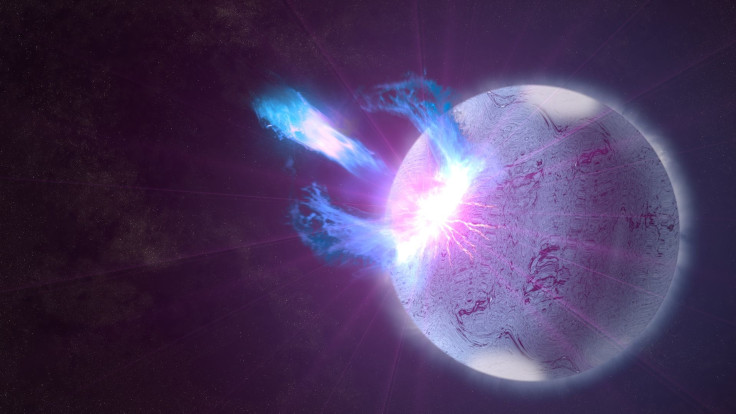Fast Radio Bursts: AI Detects 72 Strange Repeating Signals From Unknown Source

For years, scientists have pondered over the mystery of fast radio bursts or transient radio pulses that come from unknown sources and last only for a few milliseconds, sometimes a little longer.
The first FRB outburst was detected more than a decade ago in 2007, prompting a number of teams across the globe to employ various telescopes to search the skies and gain more insight into the nature of these signals. The work, which still goes on, has revealed many pulses, but nobody really knows what kind of objects or processes are behind the mysterious emissions.
Now, as part of the same effort, a team of researchers working at Breakthrough Listen, a project to search for extraterrestrial intelligence signals (SETI), has detected as many as 72 FRBs — all coming from a mysterious extragalactic source located 3 billion light-years away from Earth.
The source, named FRB 121102, has been classified as a very unique "repeater" because the FRBs it emits aren’t one-off like we see in most other cases. Its emission was witnessed over multiple outbursts occurring since its discovery in 2012.
The last emission was noted in August 2017 when scientists analyzed the data collected by Green Bank Telescope (GBT) in West Virginia and found as many as 21 pulses occurring over an hour-long period. They found the pulses from five hours’ worth of GBT observations and predicted that the source likely transitions between a quiet and excited state, where it emits the pulses for a while and then goes silent.
However, the discovery of new pulses in the latest work is putting new constraints on the periodicity of these FRBs and helping scientists gain new insight into the phenomenon. The find, as the researchers described, was made when they turned to machine intelligence for the search.
The team leading the Breakthrough Listen project — researchers from the University of California, Berkeley — developed a powerful convolutional neural network and trained it to recognize FRBs discovered with the classical approach. Once the algorithm was fed and ready, the group used it to scour the five hours’ worth of data, independently. This revealed the 72 additional bursts that were missed by astronomers last year.
“Not all discoveries come from new observations,” Pete Worden, Executive director of the Breakthrough Initiatives which includes Listen, said in a statement. “In this case, it was smart, original thinking applied to an existing dataset. It has advanced our knowledge of one of the most tantalizing mysteries in astronomy.”
According to the researchers, the latest discovery suggests pulses from FRB 121102 do not occur in a regular pattern, not at least if the period of that pattern is longer than 10 milliseconds.
They believe gaining insight into the pattern of these pulses could be the key to define computer models that could reveal powers of these mysterious sources as well as the extreme physics involved in the mechanism. This, as they said, would be pretty similar to how extreme physical conditions of pulsars were predicted with their patterns.
At present, theories ranging from highly magnetized neutron stars and supermassive black holes to alien civilization technologies have been suggested to describe the possible sources of FRBs.
The research has been accepted for publication in The Astrophysical Journal and the arXiv preprint is available online.
© Copyright IBTimes 2025. All rights reserved.





















